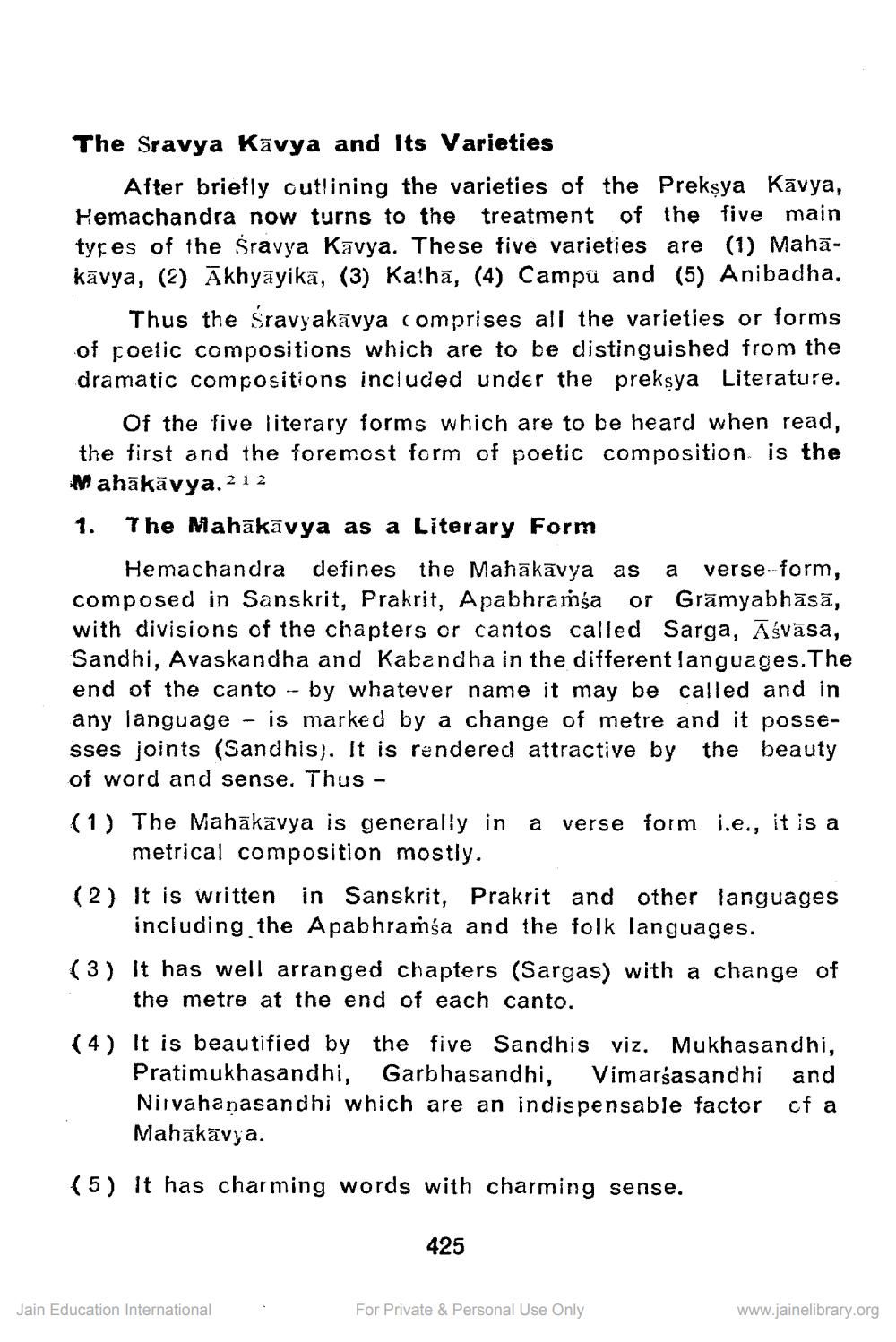________________
The Sravya Kāvya and Its Varieties
After briefly outlining the varieties of the Prekşya Kavya, Hemachandra now turns to the treatment of the five main types of the Sravya Kavya. These tive varieties are (1) Mahākāvya, (2) Ākhyāyikā, (3) Kathā, (4) Campū and (5) Anibadha.
Thus the Sravyakāvya comprises all the varieties or forms of poetic compositions which are to be distinguished from the dramatic compositions included under the prekşya Literature.
Of the five literary forms which are to be heard when read, the first and the foremost form of poetic composition is the Mahākāvya.2 1 2 1. The Mahākāvya as a Literary Form
Hemachandra defines the Mahākāvya as a verse--form, composed in Sanskrit, Prakrit, Apabhramsa or Grāmyabhāsā, with divisions of the chapters or cantos called Sarga, Aśvāsa, Sandhi, Avaskandha and Kabandha in the different languages. The end of the canto -- by whatever name it may be called and in any language - is marked by a change of metre and it possesses joints (Sandhis). It is rendered attractive by the beauty of word and sense. Thus - (1) The Mahākavya is generally in a verse form i.e., it is a
metrical composition mostly. (2) It is written in Sanskrit, Prakrit and other languages
including the Apabhramśa and the folk languages. (3) It has well arranged chapters (Sargas) with a change of
the metre at the end of each canto.
(4) It is beautified by the five Sandhis viz. Mukhasandhi,
Pratimukhasandhi, Garbhasandhi, Vimarsasandhi and Nirvahanasandhi which are an indispensable factor cf a Mahakāvya.
(5) It has charming words with charming sense.
425
Jain Education International
For Private & Personal Use Only
www.jainelibrary.org




